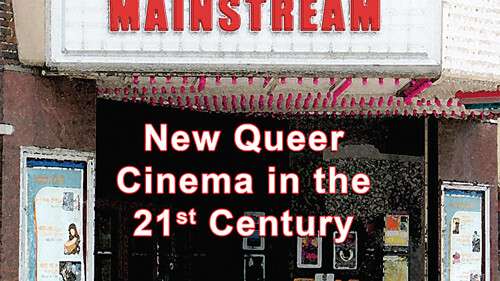Into the Mainstream
professors create book of essays on Queer Cinema

When two UW-Eau Claire faculty members went to a 2007 Midwest Modern Language Association to co-chair a panel on “New Queer Cinema,” they returned with a project that culminated recently in a book called Coming Out to the Mainstream: New Queer Cinema in the 21st Century.
Dr. David Jones, associate professor of English and chair of the 2006 Film II panel at the MMLA conference, invited Dr. JoAnne Juett, assistant professor of English, to work with him and co-chair the panel in 2007. At the conference, Cambridge Scholars Publishing approached Juett, who selected the topic for the convention, about preparing an essay collection on the same theme. She invited Jones to co-edit the collection and they both contributed essays: Juett’s Just Travelin’ Thru’: Transgendered Space in Transamerica, and Jones’ Hegemonic Whiteness and the Humboldt Murders: Boys Don’t Cry, Historical Memory, and The Ghostly Absence (Presence) of Phillip DeVine. Jones referred to the contributors as a “dream team,” which included Dr. Bob Nowlan, associate professor of English, who wrote an introduction for the collection.
The stories and ideas have not only become more widely distributed in mainstream film, but the film movement has had a longer-term positive impact on attitudes toward queerness in American culture.
Given that much writing about queer cinema has transpired within the last decade, Jones commented on what sets these essays apart: “This collection is uniquely helpful for readers, whether they are familiar with New Queer Cinema or not. The first emergence of New Queer Cinema in the 80s was clearly an important and influential moment in recent film history, but much of the audience at that time consisted of film viewers who had a strong interest in independent, even arthouse cinema. Now that we have moved past the initial emergence, it was a priority for us to consider how more recent films expand their range past arthouse audiences and arthouse styles of storytelling.”
As such, the text delves into more recent NQC films, with analysis of Brokeback Mountain, Hairspray, The Departed, and Pee Wee Herman’s Christmas Special, to name a few.
“The stories and ideas of New Queer Cinema have not only become more widely distributed in mainstream film, but the film movement has had a longer-term positive impact on attitudes toward queerness in American culture,” Jones said. “I think that some other critical writing about NQC suggests that the original subversiveness of the film movement has been watered down as a result of Hollywood’s cooptation of film storytelling about queerness.”
For more information of the collection, visit C-S-P.org or purchase the book through Amazon.




















